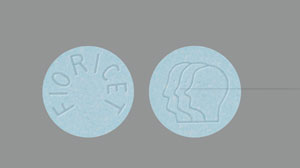Is Fioricet Addictive?
- 0
While it seems like CNS depressants get the bulk of the attention right now regarding prescription medication addiction, but Fioricet is addictive though it maybe dependency. Some bad guys may tell you fioricet is addictive. No, Fioricet is not addictive. But when you take fioricet for a longer time, you maybe depend on it. If you think normal dose fioricet cannot relieve your headache, please stop taking it and go to your street doctors and let them prescribe a new headache reliever.
If you are going to fioricet addictive, you have to take 1500mg butalbital. It may take more than 35 tablete fioricet. More than six pill fioricet may hurt you, and more than nine fioricet per day will kill you by the acetaminophen within fioricet. How can you abuse it ?
What are CNS depressants?
Central nervous system (CNS) depressants, a category that includes tranquilizers, sedatives, and hypnotics, are substances that can slow brain activity. This property makes them useful for treating anxiety and sleep disorders. The following are among the medications commonly prescribed for these purposes:
- Benzodiazepines, such as diazepam (Valium®), clonazepam (Klonopin®), and alprazolam (Xanax®), are sometimes prescribed to treat anxiety, acute stress reactions, and panic attacks. Clonazepam may also be prescribed to treat seizure disorders. The more sedating benzodiazepines, such as triazolam (Halcion®) and estazolam (Prosom®) are prescribed for short-term treatment of sleep disorders. Usually, benzodiazepines are not prescribed for long-term use because of the high risk for developing tolerance, dependence, or addiction.
- Non-benzodiazepine sleep medications, such as zolpidem (Ambien®), eszopiclone (Lunesta®), and zaleplon (Sonata®), known as z-drugs, have a different chemical structure but act on the same GABA type A receptors in the brain as benzodiazepines. They are thought to have fewer side effects and less risk of dependence than benzodiazepines.
- Barbiturates, such as mephobarbital (Mebaral®), phenobarbital (Luminal®), and pentobarbital sodium (Nembutal®), are used less frequently to reduce anxiety or to help with sleep problems because of their higher risk of overdose compared to benzodiazepines. However, they are still used in surgical procedures and to treat seizure disorders. Barbiturates may be habit-forming: Tolerance, psychological dependence, and physical dependence may occur especially following prolonged use of high doses of barbiturates. The average daily dose for the barbiturate addict is usually about 1500 mg.
How do CNS depressants affect the brain and body?
 Most CNS depressants act on the brain by increasing activity at receptors for the inhibitory neurotransmitter gamma-aminobutyric acid (GABA). Although the different classes of depressants work in unique ways, it is through their ability to increase GABA signaling—thereby increasing inhibition of brain activity—that they produce a drowsy or calming effect that is medically beneficial to those suffering from anxiety or sleep disorders.
Most CNS depressants act on the brain by increasing activity at receptors for the inhibitory neurotransmitter gamma-aminobutyric acid (GABA). Although the different classes of depressants work in unique ways, it is through their ability to increase GABA signaling—thereby increasing inhibition of brain activity—that they produce a drowsy or calming effect that is medically beneficial to those suffering from anxiety or sleep disorders.
It’s the butalbital that may be habit-forming in Fioricet, and if it contains codeine, that element may also be. Butalbital is a central nervous system depressant, and it can sedate how a person feels pain. This is combined with the pain-relieving effects of acetaminophen, which works differently than the butalbital.
As tolerance to barbiturates develops, the amount needed to maintain the same level of intoxication increases; tolerance to a fatal dosage, however, does not increase more than two-fold. As this occurs, the margin between an intoxication dosage and fatal dosage becomes smaller. The lethal dose of a barbiturate is far less if alcohol is also ingested.
Major withdrawal symptoms (convulsions and delirium) may occur within 16 hours and last up to 5 days after abrupt cessation of these drugs. Intensity of withdrawal symptoms gradually declines over a period of approximately 15 days. Treatment of barbiturate dependence consists of cautious and gradual withdrawal of the drug.
Barbiturate-dependent patients can be withdrawn by using a number of different withdrawal regimens. One method involves initiating treatment at the patient’s regular dosage level and gradually decreasing the daily dosage as tolerated by the patient.
So how do Fioricet abuse and Fioricet addiction occur? When someone is addictive to Fioricet, it usually begins as tolerance. With a drug tolerance someone takes the substance for a period of time, and then their body becomes used to it, so they need continuously higher doses to get the same effects. A tolerance can be developed for butalbital as well as codeine if it’s contained in Fioricet.
There is research that shows the average barbiturate addict may need to take 1500 mg of the drug to feel the effects they want. Unfortunately, people who are addicted to Fioricet also often take other opioids and narcotics either to amplify the effects of the Fioricet or when they run out of it to achieve the same effect.
While all addictions to prescription drugs are worrisome, with Fioricet, there is not only the concern of being addicted to the butalbital, but there are the risks of the acetaminophen component of the drug.
Acetaminophen can cause liver damage or failure when high amounts are taken, and it can be an acute situation where it happens very suddenly. It’s important for people who take Fioricet to be aware of this. Acute liver failure can occur in doses of more than 4,000 mg in a day. In addition to the dangers of acetaminophen, with Fioricet abuse, there is the risk of overdosing on butalbital as well.
Butalbital can cause respiratory depression and excessive sedation, so Fioricet addiction is dangerous in multiple ways. If you or someone you know may have a Fioricet abuse problem, it’s important to seek professional help, because it’s an addiction that can very easily be dangerous or deadly.